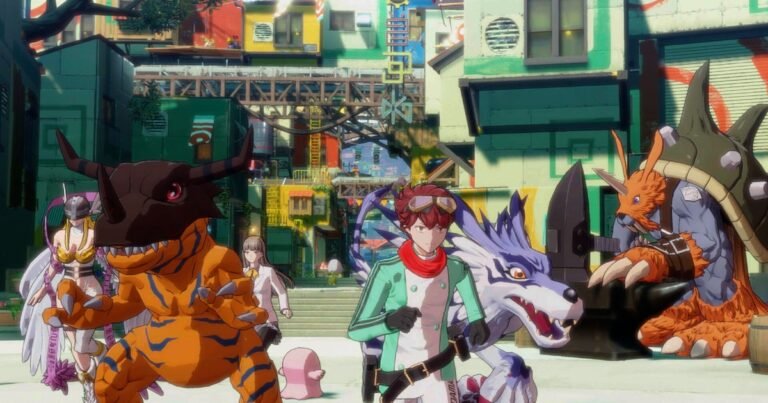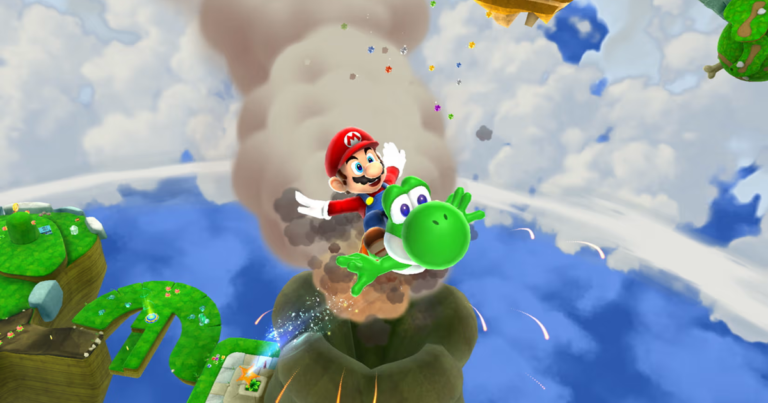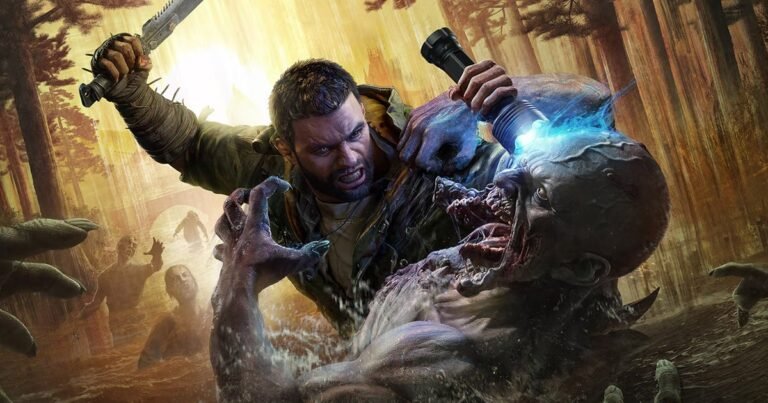
In March 1996, Super Mario RPG: Legend of the Seven Stars was released for the Super Famicom, remaining unknown to Western audiences for years. While Mario platform games filled store shelves, in Japan a curious and peculiar role-playing game with Mushroom Kingdom protagonists was launched. In the same year as Super Mario 64’s debut, the series’ entrance into the 3D realm that captured all the attention, Legend of the Seven Stars, although unknown in the West, couldn’t be more different. It featured a typical turn-based JRPG structure, combined with a 2D isometric perspective and marked by its tactical and strategic battles. The game resulted from a partnership between Square Enix and Nintendo, with Square Enix being the renowned producer of Final Fantasy, which explains Nintendo’s choice to collaborate with such a reference producer in the JRPG genre.
Combining typical turn-based combat elements with direct attacks and special powers, the narrative is another element developed from Princess Peach’s kidnapping, albeit with a different twist, putting a top-tier antagonist (Bowser) fighting alongside Super Mario. With new characters like Geno and Mallow supporting the plumber, the difference from platform games became even greater. This peculiar and almost “sui generis” adventure was only released in the West in 2008, through the Virtual Console for the Nintendo Wii.
At that time, well after the turn of the millennium, both Paper Mario and Mario & Luigi: Superstar Saga emerged as spiritual successors to Super Mario RPG, giving rise to the Paper Mario branch, developed by Intelligent Systems, while Mario & Luigi was handled by Alpha Dream. Released on the Wii’s Virtual Console platforms and later on the Wii U, the Western localization of Super Mario RPG was a kind of conquest for those players who had waited so long. Now, almost 15 years later, the remake of the inaugural Super Mario RPG in role-playing format adds even more luster to a nostalgic and peculiar game. Players who have since played Paper Mario and Mario & Luigi series games will feel at home when they start playing Super Mario RPG. The game’s atmosphere is indeed familiar, albeit with peculiarities, especially narratively and combined with solid mechanics that have stood the test of time.
### An “Old School” RPG with Rewarding Combat System
It is in the mechanics and gameplay system that Super Mario RPG stands out. The turn-based combat system, direct attacks, and special magical powers are characteristic of a bygone era. It is a gameplay model that relies on some repetition of areas and battles until characters level up and gain more defenses and special moves through “leveling up,” allowing them to face particularly powerful creatures head-on. All very much in line with 8 and 16-bit role-playing games.
The most interesting aspect is how Square (with Nintendo’s support) integrated Super Mario’s jumps and moves from platform games into this turn-based combat system. It’s as if he were in a platform game, jumping on opponents using a powerful pair of boots and finishing them off with the force of a valuable hammer. Magical spells and special attacks are central, from Mallow’s electric shocks to Geno’s powerful shots, in a fun profusion of powers to use depending on the type of opponent.
As players progress through the various areas that make up the game world, there are friendly NPCs and enemies nearby. NPCs can provide important information on which way to go in the adventure, offering items and selling power-ups and equipment items (exchanged for coins), while enemies force combat. They will attack first if they interact with Super Mario, while he can strike first if he surprises them or jumps on them, diverting the action to an arena. Attacks can be direct, involving melee-type attacks, or special. These can only be applied when there are flower points, but stronger and more special attacks consume more points, like the super jump.
The path to the final battle for Super Mario and his friends is far from guaranteed. There are numerous areas that present themselves as mazes, with exits not always being obvious. Battles occur at a good pace, so it is important to equip the party with a variety of items and choose the most suitable characters for direct attacks, special moves, and magic, all in a mix of skill. From magical abilities and regeneration to direct and effective blows, ensuring defensive equipment, strategy is paramount. From a mechanics standpoint, it is accessible and straightforward, although many battles require proper preparation. Some adversaries have powerful attacks, casting spells that hinder the party’s attacks, with effects ranging from blocking to transforming characters into mushrooms, neutralizing their state and making it difficult to respond, using minions that cause damage when attempting to recover. Furthermore, enemies unleash some devastating attacks.
When successful attack combinations fill up a gauge, an action gauge, it is possible to summon a special power from the three characters, dealing extra and deep damage to the opponent. This extra combo, which varies depending on the characters being fought, is useful in battles against level guardians and should be saved for those encounters. With such a diverse party in attributes and capacities for different special attacks, only the lack of leveling up can lead to difficulties. It is necessary to engage in a good number of regular battles before facing the said enemy. With Bowser’s physical powers, Peach’s defensive abilities, and Geno’s strong attacks, Super Mario has a team that is enjoyable to use in battle. Defeating enemies also means gaining experience points and coins, especially the green ones left by stronger adversaries. With each level up, it is possible to choose an improvement in HP, direct attacks, or magical powers. The player decides how to evolve a character.
### The Quality of the Remake
The journey through the game world is extensive, spanning forests, sewers, deserts, swamps, mountains, rivers, and steep descents, with many mini-games along the way where the goal is to collect the most coins. From barrel rides to small trips on a rail wagon, there are various challenges beyond the usual exploration of areas. Many items can be obtained along the way, such as mushrooms, potions, and treasure chests, some well hidden (a treasure identifier can be used), among manual saves. In exploring the areas, it is interesting to see how producers have carefully attended to the details. Entering an accommodation for a nap and health regeneration.
If you choose to sleep, the character falls into a deep sleep, emitting a watery ball through the nose that expands and contracts with breathing. To wake up, simply press the jump button and a quick exit from bed occurs. Interacting with all NPCs, especially the Toads, means being surprised with offers, requests, and details about their lives. It’s a lively world. In some accommodations, you will be surprised by the presence of two characters: Link and Samus. The former due to the noise of opening a treasure when trying to wake him up, and Samus asking for rest until the next mission when approaching her.
The transition of the game from Super Famicom to Switch, with all its enhanced and improved visual treatment, is very faithful to the original art, preserving the perspective, the game map, and all areas. Visually, there is an enhancement of graphic quality, with more color, brightness, and a renovation of existing buildings, detailed and very beautiful, with superior definition. Even the characters have received special treatment, highlighting their movements and actions, while always respecting the original work, which is already very good considering that the game is developed for a 16-bit console.
### Super Mario RPG: Legend of the Seven Stars – Remake Review
New cinematic sequences have been added to crucial moments of the adventure (Super Mario and the team collecting a star), highlighting the art of the characters and the world they inhabit. The soundtrack composed by Yoko Shimomura (who also composed for Street Fighter II and Kingdom Hearts) has been remade in a new orchestrated version, authored by Shimomura, capable of adding even more depth and excitement to the different moments of the narrative. There are memorable tracks that invite a solo listen. Nostalgic players can revert to the original soundtracks at any time to better appreciate the dimension of the work done by the artist for this remake. The “Boss Rush” option is an additional extra option after completing the game, allowing players to face off against different rivals in an escalating battle.
[Cover image for YouTube video](https://gamesdetails.com/wp-content/uploads/2025/10/hqdefault-420.jpg)
Watch on Youtube
### Old School Charm with a Modern Twist
The original Super Mario RPG: Legend of the Seven Stars is a beloved and entertaining role-playing game, still holding up well in its 16-bit format compared to more recent jrpg titles. The remake has breathed new life into the game by adding cinematic sequences and other enhancements, showcasing its quality. While newer titles like Paper Mario and Mario & Luigi have introduced improved combat systems and richer mechanics, Super Mario RPG remains a classic RPG with solid foundations. The collaboration between Square and Nintendo has been successful, with the remake reaching a global audience while staying true to the original design.
Features of the Remake
- Art faithful to the original work
- Improved visuals enhance the beauty of the world
- Peculiar narrative
- Combination of different characters
- Soundtrack enhanced by the composer of the original music
- Character animations
- New cinematic sequences
- “Boss Rush” mode after completing the game
Criticism
- Could have introduced more new mechanics



